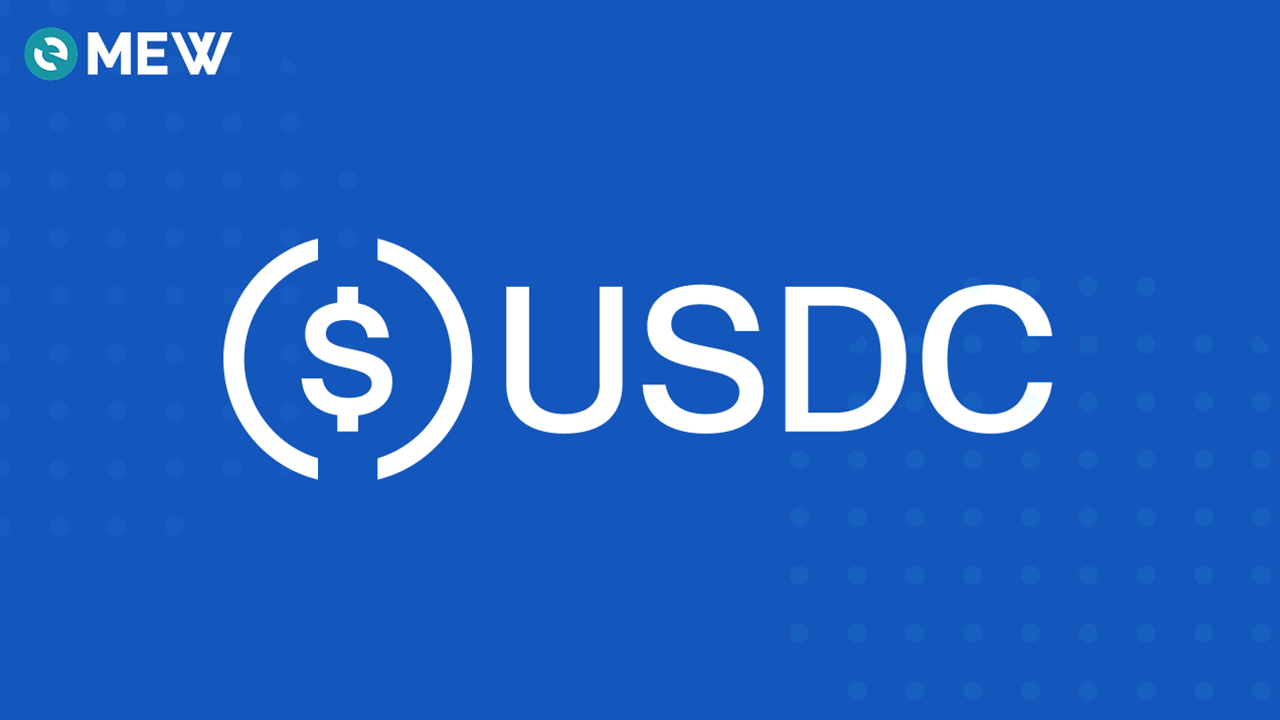USD Coin (USDC) is a stablecoin issued by Circle, pegged to the US dollar at a 1:1 ratio. Each coin is backed by $1 in reserves, which are stored in cash and short-term US Treasury bonds. A stablecoin is a token that is valued at 1:1 with a reference asset, typically with a fiat currency. USDC is pegged to the US dollar, but is not affiliated with the government-issued US dollar.
History
Circle announced USDC on May 15, 2018, launching it in September through Centre, a joint venture with Coinbase. By March 29, 2021, Visa supported USDC for transactions within its network.
In July 2022, Circle reported USDC circulation at $55 billion. On March 11, 2023, USDC lost its dollar peg when $3.3 billion of Circle's reserves were at risk due to Silicon Valley Bank's collapse, regaining its peg four days later.
In August 2023, Circle and Coinbase dissolved the Centre Consortium, giving Circle full governance over USDC. By February 2024, Circle discontinued USDC on the TRON blockchain, halting new token minting on February 21, with transfers to other blockchains allowed until February 2025. This was due to the lack of demand of USDC on the Tron network, however Circle stated it was due to ‘risk management’ and to ‘ensure USDC remains trusted, transparent and safe'.
As of December 2024, Forbes reports USDC competes with Tether, which leads in market cap. They neared parity in 2022, but USDC's position weakened post-bank collapse. However, Visa data shows USDC overtook Tether in transaction volume by August 2024. However, USDT transaction volume has remained above USDC ever since.
What is Unique about USDC?
The stablecoin market is increasingly competitive, but USDC aims to distinguish itself through transparency and reliability. It assures that users can confidently exchange 1 USDC for $1, as verified by audits from a reputable accounting firm that match reserves to tokens in circulation.
Circle and Coinbase, the companies behind USDC, prioritize regulatory compliance, which has facilitated their global expansion. Coinbase contemplated diversifying USDC's backing, by adding a broader range of investments in its reserves in order to achieve a higher rate of return, like their competitor USDT. However, they retracted that proposal after community backlash. USDC's success has been attributed in large part to the transparency of its funding sources.
USDC has maintained a clean reputation, avoiding claims of misconduct that have afflicted competitors such as Tether (USDT), and as a result it has grown significantly in market share.
How it’s used
As of 15/04/2025, USDC is natively supported by 19 blockchain networks: Algorand, Aptos, Arbitrum, Avalanche, Base, Celo, Ethereum, Hedera, Linea, NEAR, Noble, OP Mainnet, Polkadot, Polygon PoS, Solana, Stellar, Sui, Unichain, and ZKsync, with more to follow in the future.
USDC has also been bridged to numerous new blockchains via third-party bridges, resulting in the creation of bridged variants of USDC such as USDC.e. If you have USDC on Ethereum, to get it on another network you would have to bridge. This article explains what it means to bridge your tokens and our L2 for Beginners article explains more about layer 2 networks.
USDC is also supported on many of the DeFi apps that support USDT including Aave, Compound, Uniswap and more. One of the main use cases of USDC is to hold a stablecoin while the market fluctuates to have a more stable holding in case the market drops significantly. You can swap your tokens to stablecoins when you expect market volatility so you keep the value of your crypto without offramping. Stablecoins make it easy to keep the fiat value of your crypto without having to use a centralized exchange.
Another use case is for flashloans on lending protocols like Aave to increase their position on a certain crypto. USDC can also be swapped without fees to USD on Coinbase. On Uniswap and other decentralized exchanges (DEXs), users can add their USDC with another token to a liquidity pool to earn trading fees and incentives.
You can buy, hold, and bridge USDC in the MEW Mobile app if you prefer using mobile, or by downloading the Enkrypt browser extension if you prefer using a web browser.
We love to hear from users on our social media about any guide or article suggestions you have for the future! Make sure to follow us on X(Twitter), sign up for our newsletter to stay up to date with MEW, and check out our weekly podcast Crypto Currents for the latest news about stablecoins and more.

